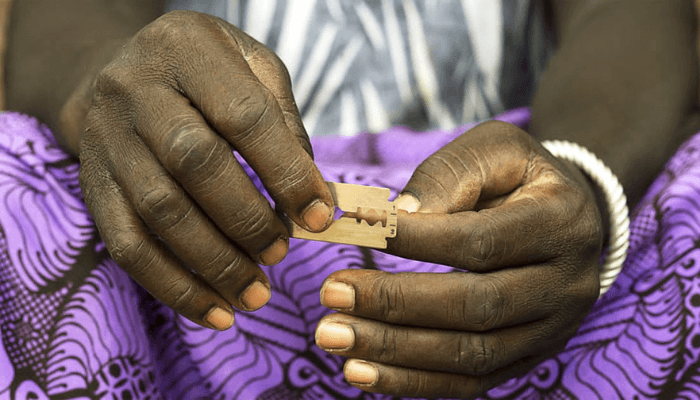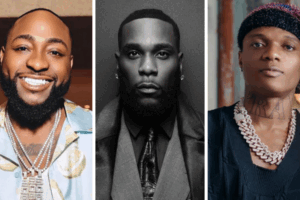
Blessing Ogo remembers the day her childhood was cut short, though she was too young to understand what was happening. She was barely five when her relatives restrained her, pressed her body down, and took away a part of her she would never recover.
Decades later, Ogo still lives with the trauma. Speaking at a two-day media dialogue organised by the Oyo State Ministry of Information and Orientation in collaboration with the United Nations Children’s Fund (UNICEF) in Benin City, Edo state, she recounted the harrowing experience.
“The painful experience has left me struggling to enjoy sexual intimacy with my partner. FGM is barbaric and unnecessary. The trauma still lingers. It makes me feel less feminine,” she decried.
Her testimony captured the lifelong scars that survivors of Female Genital Mutilation (FGM) endure, scars that are not just physical but emotional, psychological, and deeply personal.
A pain that doesn’t go away
Ogo listed the toll it has taken on her body, which include, severe pain, excessive bleeding, infections, urinary problems, menstrual difficulties, and, perhaps most devastating, the inability to enjoy her sexuality.
For many women like Ogo, FGM is not just a memory of a painful childhood ritual but an ongoing battle with its consequences.
“I still suffer anxiety and depression. Every day, I live with the reminder of something I never asked for,” she added.
In Nigeria, nearly 20 million women and girls bear similar scars. According to UNICEF, most of them were cut before their fifth birthday, too young to understand, resist, or consent.
The practice, which persists despite being outlawed in 2015, is often performed in secret, justified by tradition, and imposed by those meant to protect them: parents, grandparents, and community elders.
Tradition passed down, but not without regret
For Bridget Omobude, the story is different but no less heartbreaking. She was once a practitioner of FGM, taught by her great-grandmother and her mother. Cutting girls was a family trade, passed down through generations.
“When I joined this practice, I thought I was helping. My family has always cared for children. It was a tradition. We believed it made girls pure and respectable,” Omobude admitted.
But years later, her own daughter opened her eyes to the harm. She remembers the moment when her daughter distanced herself, blocked communication, and called the police to stop her from cutting again.
“When they told us to stop, I was confused. But when UNICEF brought this programme, it made me happy again. I felt joy in learning, in taking part, in going to school. Now I know the truth, that FGM does not help. It hurts,” she said.
Omobude now speaks against the very practice she once upheld. Her journey from cutter to advocate is proof that change is possible, even in the face of centuries-old traditions.
Read also: FGM, a grave violation of human rights, UNICEF warns
A cleric’s stand: “God never approved it”
Religious leaders are also adding their voices to the fight. Pastor Ken Izah, a cleric present at the dialogue, made it clear that FGM is not supported by faith.
“From the Bible’s standpoint, God does not support it. In Genesis 17, God told Abraham that circumcision was for male children. Sarah was never circumcised. That alone makes it clear: female genital mutilation has no place in the Bible, no place in God’s plan, and no place in our community,” he declared.
He urged communities to take collective responsibility, stressing that the fastest way to eradicate the harmful practice is through joint action. “No woman deserves to live an unfulfilled life. FGM must stop,” he said.
The hidden cost: $49m a year
Beyond the personal pain, FGM is a heavy burden on Nigeria’s health system. According to a 2022 analysis using the World Health Organisation’s FGM Cost Calculator, Nigeria spends approximately $49 million every year treating complications from FGM.
This includes emergency care for excessive bleeding, long-term treatment for infections, psychological support for trauma, and interventions for sexual and reproductive health complications. Globally, the costs are staggering as over $1.4 billion are spent annually in high-prevalence countries.
“If urgent action is not taken, these costs will rise by 50 percent as populations grow. FGM hurts girls, imposes lifelong health risks, and strains healthcare systems. It doesn’t help the woman enjoy her body, and it certainly doesn’t prevent promiscuity as many claim,” warned Denis Onoise, child protection specialist at UNICEF’s Lagos office.
Onoise emphasised that ending FGM would not only save money but also foster healthier families and stronger communities.
Survivors leading the charge
One of the most powerful aspects of the media dialogue was the courage of survivors like Ogo, who used their voices to speak truth to power. Their testimonies brought the statistics to life, turning numbers into faces and stories.
Celine Lafoucriere, chief of UNICEF’s Lagos field office, commended their bravery. “Female genital mutilation is never a choice but a violation inflicted on women and girls. Most victims were cut before their fifth birthday, when they were completely powerless. Their courage to speak out today is the beginning of change,” she said.
She called on journalists, government officials, and community leaders to amplify these voices and challenge the myths that sustain the practice. “No culture or custom should ever come at the expense of girls’ health, rights, or future,” she insisted.
The role of men and boys
While much of the advocacy around FGM centers on women, experts stress that men must also be part of the solution. Aderonke Olutayo, a sexual and reproductive health consultant, explained that male involvement is critical because men are often key decision-makers in families.
“Lack of male champions prolongs FGM acceptance. If fathers, husbands, and brothers stand up and say no, it will stop faster,” she said.
Olutayo highlighted barriers such as stigma, fear of reprisal, and weak reporting mechanisms that prevent survivors from speaking out. She urged stronger laws and more prosecutions to deter offenders.
A call to action
The dialogue closed with a renewed sense of urgency. Survivors, former practitioners, clerics, government officials, and UNICEF representatives all agreed that FGM must end.
Rotimi Babalola, permanent secretary of the Oyo State Ministry of Information, stated, “The media can spark the change we need collectively.”
He urged journalists to carry survivors’ stories into homes and communities, where decisions about girls’ futures are made.
For survivors like Ogo, this is not just about policy or healthcare costs. It is about dignity, wholeness, and reclaiming what was stolen. “I don’t want any girl to go through what I went through. We must end it now,” she stated.
Despite being outlawed a decade ago, FGM continues in many Nigerian communities, driven by secrecy, tradition, and misinformation. Progress has been made, thanks to awareness campaigns, survivor advocacy, and faith leaders taking a stand, but the journey is far from over.
Ending FGM will require more than laws on paper. It demands collaboration: families breaking cycles of harm, practitioners laying down their blades, men speaking against it, and governments enforcing accountability. It requires sustained awareness and grassroots action.
Above all, it requires listening to survivors like Ogo and Omobude, who embody both the pain and the possibility of change, because as long as little girls are still cut before their fifth birthday, Nigeria will carry scars too deep to ignore.
Royal Ibeh
Royal Ibeh is a senior journalist with years of experience reporting on Nigeria’s technology and health sectors. She currently covers the Technology and Health beats for BusinessDay newspaper, where she writes in-depth stories on digital innovation, telecom infrastructure, healthcare systems, and public health policies.




